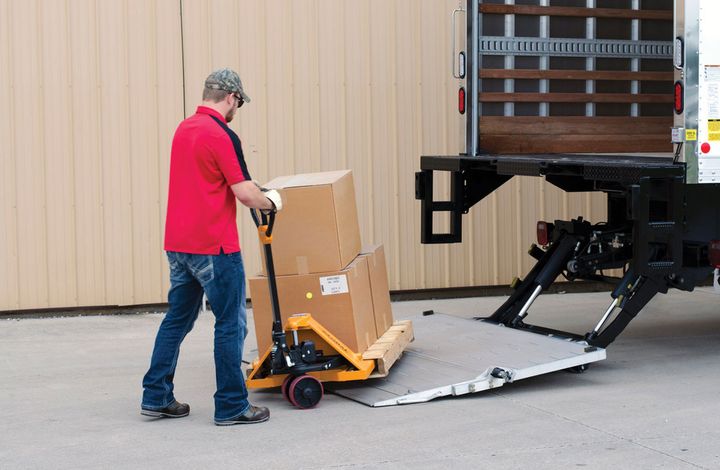Photo: Anthony Liftgates
The last-mile delivery business is driving up demand for liftgates.
Unlike the shrink-wrapped pallets of freight you’ll find in most van trailers, last-mile delivery trucks carry everything from packages containing wireless earbuds or camping tents, all the way up to snowblowers and washing machines. If you can buy it online, somebody will have to deliver it.
But how does one de-truck a 400-pound snowblower and get it up a customer’s driveway? A liftgate would be helpful, perhaps one with cart-stops along the edge of the platform to prevent stuff from rolling off. A couple of securement-strap tie-down points might come in handy, too. But for all the safety trappings you can buy, if drivers find them cumbersome and difficult to use, they will just rust away on the back of the truck.
The home-delivery business is driving up demand for liftgates, and manufacturers are rising to the challenge with smaller units that can fit onto more chassis with more options. Liftgate choices will be narrowed by what final-mile truck chassis and body are selected, and which liftgates are designed to fit that application, says Terry Eyink, engineer for Thieman Tailgates, which offers a broad range of products.
“From there, it comes down to choosing the liftgate model that best fits the application and optioning that liftgate to move the product to be delivered. For example, in-cab shut-off switches that cut power to the liftgate are good options for residential deliveries, so unintended usage of the liftgate doesn’t occur.”
In-cab shut-off switches indeed. Curious children just love pressing buttons.
Liftgates can really tax the batteries, and on smaller trucks doing long delivery routes, there’s never enough time to fully recharge them. There are an increasing number of charging options available for liftgate power management, including some that use solar panels.
John Houweling, president of Coral International Truck Equipment in Langley, British Columbia, a distributor and installer of Dhollandia liftgates, says it’s common practice in Europe (but not so much here) to power the device with two isolated 6-volt batteries located close to the liftgate rather than a single 12-volt battery.
“A pair of 6-volt batteries will hold their voltage better than a single 12-volt battery,” he says. “You can run the liftgate batteries right down with no risk to the starting batteries. It’s not a cheap option, but it’s very cost-effective over the life of the truck. Just ask anyone who has had a battery let them down midway through a route.”

Cargo ramps are an alternative (or addition) to liftgates. Photo: Link Mfg.
And it’s not just big or heavy cargo that gives drivers heartburn. Getting even a couple of boxes weighing 50 pounds or so off the truck and up to the house is a real chore. (If you don’t think that’s a chore, try doing it 30 or 40 times a day. Can you say repetitive strain injury?)
Ramps are a low-cost, low-maintenance alternative to liftgates for drivers in this situation. Link’s Cargo Management Products Division makes swivel, spring-assist, bi-fold, tri-fold, and customized loading ramps for rear and side-mount applications and from a variety of deck heights.
And unlike liftgates that can be slow to deploy, a ramp can be opened and in use within seconds – and can be stowed just as quickly. That can be a big concern with heavy delivery schedules.
CUT COTS OF THE FLEET WITH OUR AUDIT PROGRAM
The audit is a key tool to know the overall status and provide the analysis, the assessment, the advice, the suggestions and the actions to take in order to cut costs and increase the efficiency and efficacy of the fleet. We propose the following fleet management audit.




